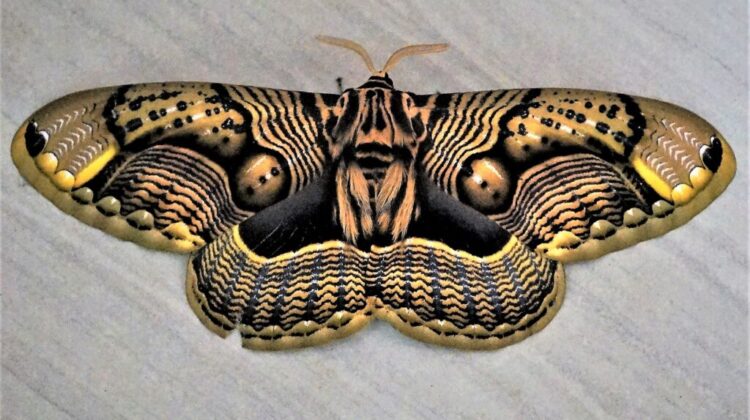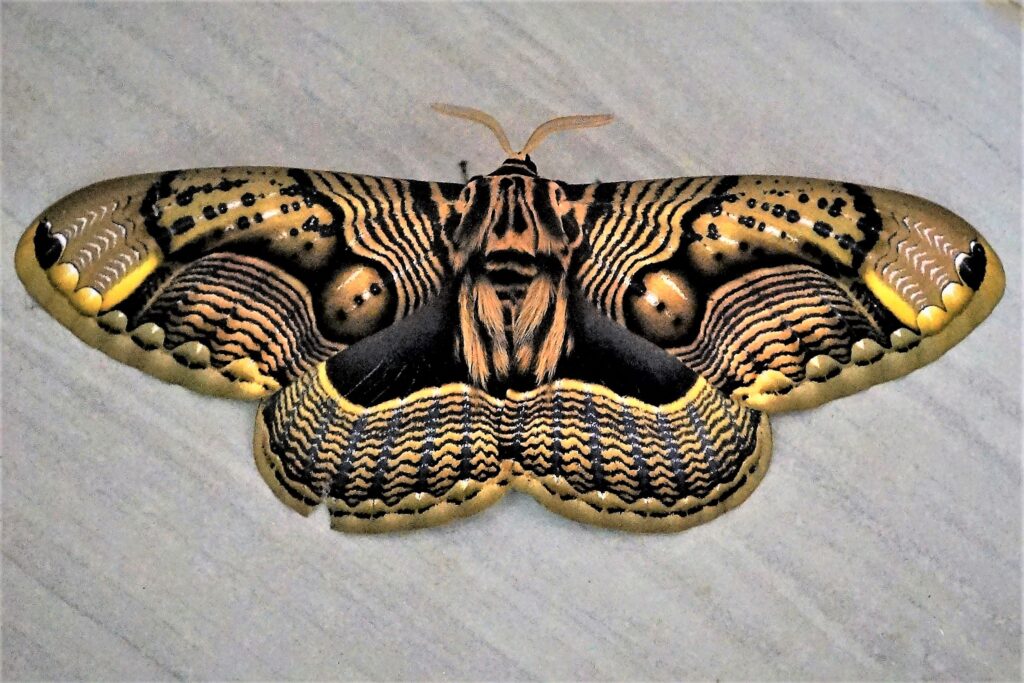
Brahmaea wallichii, also known as the owl moth, is a stunningly beautiful moth that belongs to the family Brahmaeidae, the Brahmin moths. It is one of the largest species of moths and is found in various regions including the north of India, Nepal, Bhutan, Myanmar, China, Taiwan, and Japan. In this article, we will delve deeper into the various aspects of this magnificent creature, from its appearance to its habitat and behavior.

Appearance
One of the striking features of the owl moth is the well-developed eye spots on its front wings, which serve as a protective mechanism against predators. It has a characteristic pattern of black-brown stripes on its wings, and the light-brown margins of the back wings display small triangular white spots. The robust body of the moth is also black and brown, with characteristic orange-brown stripes. The wingspan of the owl moth ranges from 90-160 millimeters (3+1⁄2–6+1⁄4 inches), making it one of the largest moths in the world.
Etymology
The species name of Brahmaea wallichii is named after the renowned botanist Nathaniel Wallich, who discovered the species.
Behavior
The larvae of the owl moth feed on Fraxinus excelsior, Ligustrum, and common lilac. Interestingly, they are able to neutralize plant toxins produced by Ligustrum, a mechanism that enables them to consume the plant as part of their diet. In captivity, they also feed on elderberry. The moth is predominantly nocturnal and rests with outspread wings on tree trunks or on the ground during the daytime. When disturbed, the moth fiercely shakes, but it does not fly away.
Habitat
The owl moth’s natural habitat is tropical and temperate forests, where it thrives in the presence of its preferred food sources. It is found in various regions across Asia, including the north of India, Nepal, Bhutan, Myanmar, China, Taiwan, and Japan. In these regions, the owl moth can be spotted in dense forests, where it feeds on the leaves of ash trees, privet, and lilacs. The moth is also known to inhabit mountainous regions, where it is found at elevations of up to 3,000 meters.
Subspecies

Brahmaea wallichii has several subspecies, each with slight variations in appearance and behavior. The most common subspecies are:
- Brahmaea wallichii wallichii: This is the most widespread subspecies and is found in various regions across Asia, including India, Nepal, Bhutan, and Myanmar.
- Brahmaea wallichii insulata: This subspecies is found in Taiwan and is slightly smaller in size than the other subspecies.
- Brahmaea wallichii saifulica: This subspecies is found in the western Himalayas and is known for its distinctive reddish-brown coloration.
Conclusion
In conclusion, the owl moth is a fascinating creature that is renowned for its beauty and large size. Its well-developed eye spots and characteristic patterns on its wings serve as a protective mechanism against predators. The owl moth’s behavior and habitat make it an interesting subject of study for entomologists and nature enthusiasts alike. As with all species, it is important to conserve and protect the owl moth’s natural habitat to ensure the survival of this magnificent creature for generations to come.

Leave a Reply